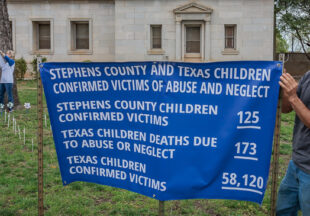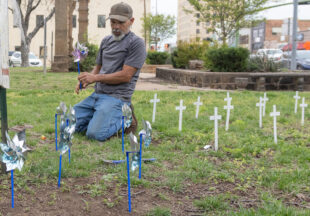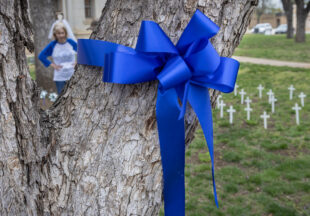Breckenridge ISD to end remote learning program due to high rate of failure
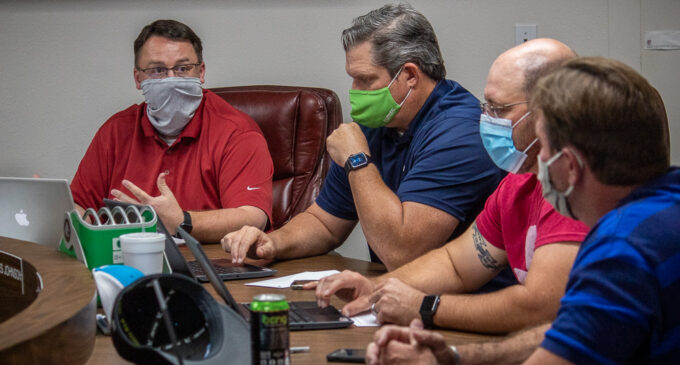
By Carla McKeown/Breckenridge Texan
The Breckenridge Independent School District’s Board of Trustees met in a special called meeting shortly after noon today, Tuesday, Oct. 6, and voted unanimously to end remote learning in the school district with a few exceptions.
According to the resolution that was approved, the district’s remote learning program will stop at the end of the school day on Friday, Oct. 16, and students need to return to their designated campus for in-person learning no later than Monday, Oct. 19. Click here to read the entire resolution.
The vote came three days after Stephens County Judge Michael Roach announced that the county had lost its exempt status and would be required to comply with Gov. Greg Abbott’s orders for mandatory mask wearing due to a recent increase in COVID-19 cases that put the county over the governor’s 20-case threshold. Additionally, over the weekend, Roach also moved the county’s Community Health Plan status from Stage 3 to Stage 4, which is labeled “High Restrictions” and includes directions for local residents to practice social distancing, wash their hands frequently, wear masks and stay at home as much as possible.
During today’s meeting, all of the board members, district employees and others in attendance were wearing masks. Currently, the district has two active student cases of COVID-19, as well as two students who have recovered from the disease caused by the novel coronavirus. Additionally, there are two active cases among the staff members and three staff members who have recovered from the disease. Several students have been quarantined due to close contact with others with COVID-19.
Superintendent Bryan Allen said that at the three-week progress report, district administrators noticed that a large percent of the remote learners were not being successful in their classes. About 140 students in the district are being educated through the district’s remote learning program.
“So, we started looking at some options … and about that same time, we started seeing some districts across the state who were suspending their remote learning, kind of for the same reason,” he told the board members. “A lot of them had some additional reasons: students not being successful in remote learning; teacher morale was an issue with a lot of the other districts, having to more or less do double work.”
Additionally, some districts recognized that their teachers weren’t able to pay as much attention to the in-classroom students because they were having to spend so much time on the remote learners, Allen said.
“So, we started … considering what it would look like to end remote learning,” he continued. “My first concern was what about our kids that are in quarantine, what about our kids that are sick, what about our medically fragile kids who do have underlying conditions? If we did away with it, is it an all or none type of thing?”
Allen said the administrators sought advice from the school district’s attorney and determined that they are still able to serve students who meet certain criteria, specifically students who are in quarantine, are sick or are medically fragile, while bringing everyone else back to the classrooms.
“We’re here to educate kids, and we’re here to get them prepared for the next thing in life. Through the first six weeks, the administrators and I don’t feel like that’s happening as consistently as it should,” he said. “There’s not a replacement for the classroom teacher. This Chromebook or this Mac Book or this laptop, whatever you’ve got, that’s not a replacement for the teacher. If a kid can’t read, that screen’s not going to teach him how to read. They’ve got to have that interaction with a person, and we’ve not been able to do that over the first six weeks. So … we’ve decided that we’d like to recommend the suspension of our remote learning, our asynchronous and synchronous plan, keeping those plans in place for any kind of quarantine situations or anybody with any underlying conditions.”
The new plan is laid out in a resolution approved by the board. It includes a section that gives the administrators some flexibility to look at each case individually and approve remote learning for specific students as needed. Students who need to stay at home to avoid being exposed to the coronavirus because they are medically fragile will need to have some type of confirmation from a doctor, Allen said.
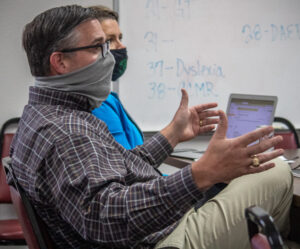
Breckenridge High School Principal William Paul talks to the school board about the problems he’s seen with the remote learning program. (Photo by Tony Pilkington/Breckenridge Texan)
Breckenridge High School Principal William Paul said that he compared the number of high school students who were failing at the three-week progress report last year to this year’s numbers. “… last year we had 195, this year it’s 240. Both (are) high, but that’s pretty normal for a first three weeks,” he said. “But the thing that really stood out to me was the number of kids that were failing three or more subjects at that time. Last year at this time, for Progress Report 1, 47 were failing three or more (subjects), which is roughly 10 percent of the student body. This year, it was 85. … When you have 85 kids that are failing three or more classes, that’s hard to recover from. Half of those are from the freshman class. So, when you look at the drop-out rate and things like that, that’s a major concern for me.”
Paul said at least 60 percent of the high school students who are failing are remote learners.
Allen said that a lot of other districts are considering canceling their remote learning programs but that most of the ones that have gone back to classroom-only have been smaller school districts. However, a couple of larger school districts, Whitesboro and Lubbock Cooper, have recently ended their remote learning programs, he said.
“A lot of superintendents that I’ve talked to, similar size to us in Region 14 and 15, are certainly thinking about this, because I don’t know that anybody can sit there and look you in the eye and tell you ‘Hey, what we’re doing is working.’ Not anybody that I’ve talked to anyway,” he said.
Families who do not want their children to attend school in person at this time but who do not meet any of the district’s requirements for remote learning have several options, Allen said, including:
- Traditional home schooling
- Apply to transfer to a nearby school district that offers remote learning
- Apply to use an accredited online schools, such as Texas Tech University ISD, which has a fee, and K-12, which is mostly free, Allen said.
The district will continue follow the health and safety protocols that were put in place earlier this school year, including requiring masks for students in third grade and above, regular sanitizing of the schools and more.
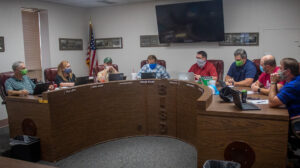
The Breckenridge ISD Board of Trustees voted unanimously Tuesday afternoon, Oct. 6, to end the district’s remote learning program. Pictured, from left are board members Paul Lippe, Carrol Kanady, Nic McClymond, Graham Reaugh, Superintendent Bryan Allen, Ardes Johnson, Cody Wimberley and Roy Russell. (Photo by Tony Pilkington/Breckenridge Texan)
Cutline, top photo: BISD Superintendent Bryan Allen, left, explains some of the problems the school district has had with remote learning this school year to board members, including Ardes Johnson, Cody Wimberley and Roy Russell. (Photo by Tony Pilkington/Breckenridge Texan)









































































